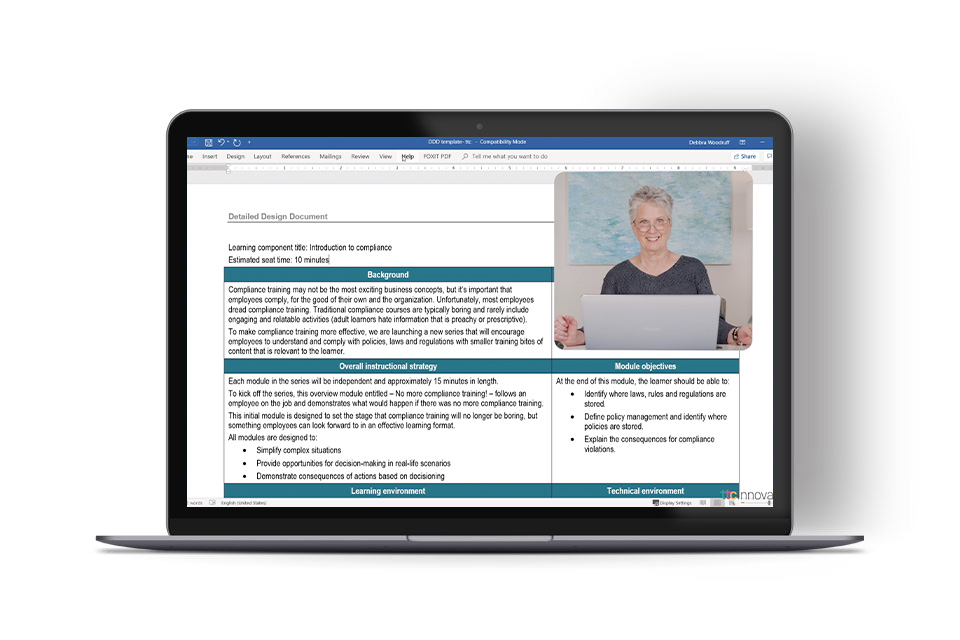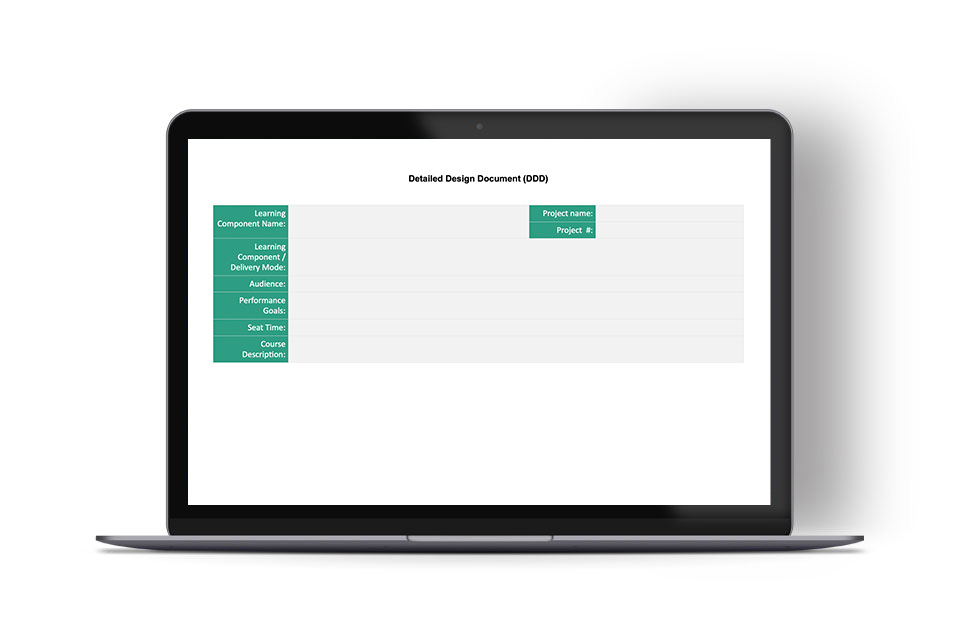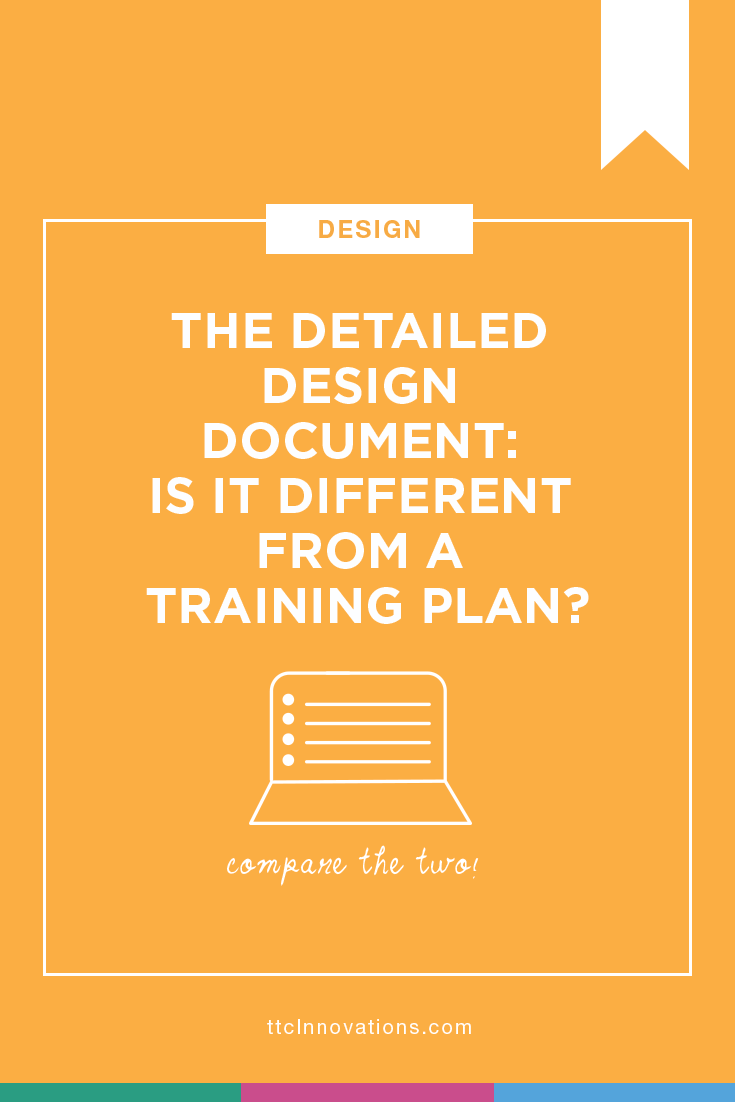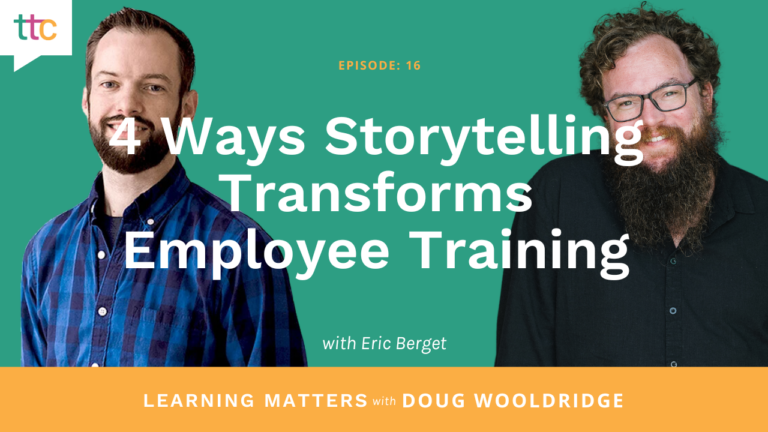Are a training plan and a detailed design document synonymous? Or are they two different documents that are both necessary for a successful training implementation for your department or organization?
Let’s take a closer look. A training plan is defined as a detailed document that guides the planning and delivery of instruction.
A training plan is a guide the planning & delivery of instruction. Share on X
The detailed design document formally records the design of the content — that is, the lessons or modules and all the deliverables necessary.
The detailed design document records the design of content. Share on X
Sound like the same thing? To see, let’s consider the components that go into each of these documents.
What to Include in Your Detailed Design Document
Now, let’s look at the detailed design document or DDD. A well-developed DDD allows you to develop and deliver thorough and effective classes. Ah-ha, the key difference here is that we have gone from preparation to development.
This document should include:
- Project specifications — These are the fundamental requirements, as well as what is being built and for whom.
- Overview — Include the basic parameters, course description, terminal objectives, audience(s), length (seat time) of each lesson, any developmental information, prerequisites, assessment strategy and any variations for the intended audiences
- Deliverables — This section is what the writer primarily uses to build the lessons/modules and includes the course content outline, delivery methodology, design strategy, for elearning: storyboards, supporting resources identified, assessment questions, activities and a wrap-up.

FREE Video!
Ensure a smooth delivery, creating a detailed design document from analysis to content development.
Clearly, there are a lot of similarities in both documents. The training plan, however, is more strategically defined and gives the “big picture.” Many of its components are tactical and can be drilled down further to make sure the lessons being built will fulfill the project’s goals.
As an instructional designer, seeing the training plan allows you to be sure what you’re writing/building supports the goals of the organization. Then, a separate detailed design document allows you to take the information to a more granular level to write clear and concise lessons.
In other words, the training plan lets you see the view from the 50,000-foot level, and the detail design document lets you get to the ground floor and find all the necessary resources to build the right learning outcome.

FREE Download!
Download our FREE “Detailed Design Document Template” to develop and deliver thorough and effective classes.
What to Include in Your Training Plan
A well-developed training plan allows you to prepare for and deliver thorough and effective classes. It should include, at a high level, six major parts:
- List the training goals, how these goals will benefit the participants and how the learning aligns with the goals of the organization.
- Identify the individuals or departments that need to participate and define the training variations for each group.
- Outline the estimated budget—training resources, such as videos, website development, etc..; costs associated with the resources; and any other costs, such as outside suppliers, trainer compensation, etc.
- Identify instructors, both within the organization and outside suppliers.
- Outline the training topics, including breaking them down into lessons, high-level objectives for each lesson, training modalities, timing, assessment needs and any activities beyond the classroom.
- Outline the roll-out of the training, including a calendar for each group participating.
Depending on the size of the project, the plan may contain much more detail, but these six components are a staple in any training plan.
If you need help creating either for your next learning program, we can help! From outsourced content development to providing extra hands to help scale your team at a moment’s need, our team of Innovators are here to take on the details so you can focus on the big picture!
Contact Debbie today to learn more about our custom learning solutions and Innovators on Demand™ for learning teams.








